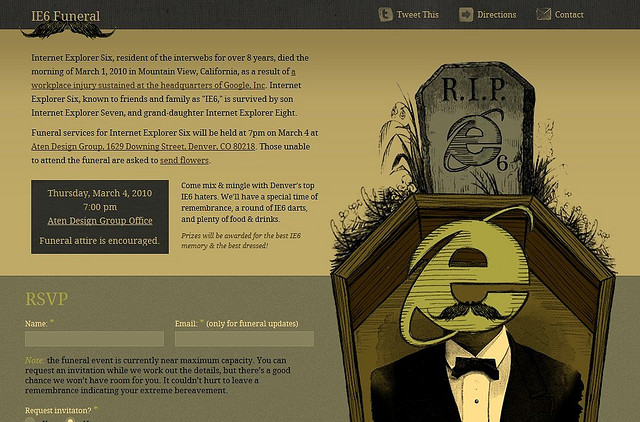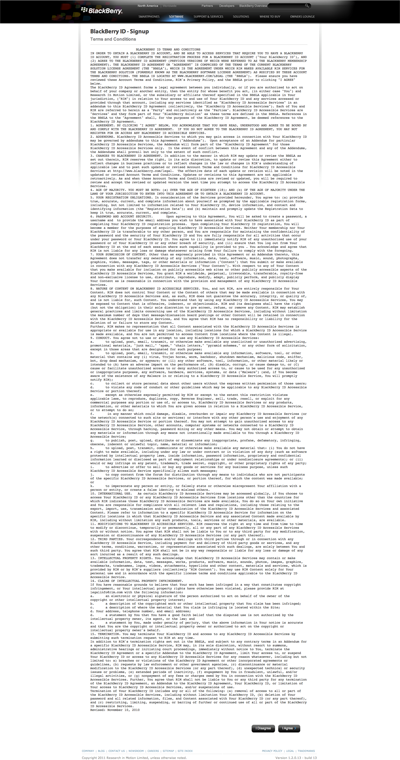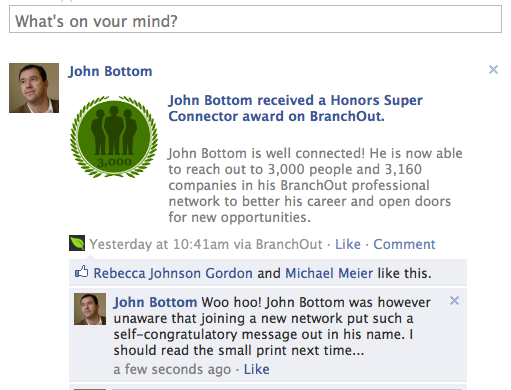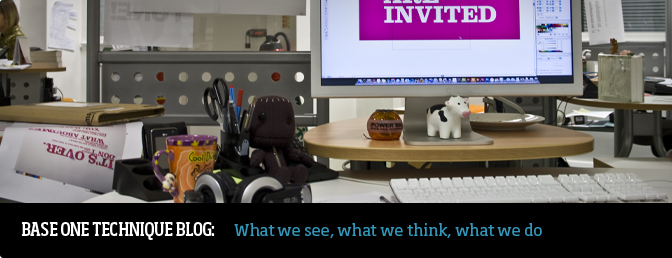You might as well ask what makes a good doughnut.
You might think custard filling would be good.
I wouldn't.
And let's not get hung up on nomenclature.
Let's call 'em all 'straplines' for the purposes of this post.
So what makes a good one?
It depends on what it's trying to achieve.
Put simply, if it achieves what it's designed to do, I guess you can call it 'good'.
(But whether the insight behind the line is 'good' or 'right' is another conversation altogether.)
After all, plenty of straplines are memorable.
And if it was designed to be so, then it's done its job.
But can you remember the name of the business?
Does the strapline tell you anything about it?
That leads on to the second question:
b2b or b2c, does a business really need a strapline?
Well, put it like this:
Most of the planet knows what business Nike is in.
Nike doesn't need its 'Just do it' strapline any more.
It doesn't even need its name.
The swoosh does it all.
Imagine that.
But Nike is one of a select few of global corporates that can get away with the luxury of this branding minimalism.
For the rest of us, we need to be a bit more informative about what business we're in - and pronto.
This is where a 'good' strapline comes in.
So we're back to the first question.
What's the strapline's job?
You can over-analyse straplines, taglines and slogans.
You can break them down into categories with names like 'The Big Idea', 'Visionary' 'Instructional' 'Performance Claim' or even 'Say What You See'.
And discuss their pros, cons and brand suitability.
But it won't guarantee a good result.
Or tell you what it should be doing.
No formula or amount of discussion will.
The job of a strapline is pretty simple, really.
I see it as three-fold:
1. To inform
2. To reflect the brand's identity
3. To do it with flair
A good strapline ticks all three boxes.
A good strapline works hard.
It will give us a good at-a-glance idea as to what the company does.
The way that it does so will communicate the brand's positioning.
If it does both in a way that leaves us admiring its panache, then it's done its job.
And if it passes into the vernacular - then you've hit the big time.
Simples.
But that's pretty much the sole preserve of the big b2c boys.
Pretty much, because the straplines of big b2c/b2b 'crossover' brands (the likes of Dell, IBM, UPS) occasionally pass over the great b2c/b2b divide to make an impact on the public consciousness.
So in rough chronological order, here are 10 b2b 'crossover' brand lines that have done just that over the years. They're not necessarily my favourite brands - but their straplines have worked damn hard and ticked the right boxes.
1 - When it absolutely, positively, has to be there overnight
FedEx, 1981
Ally & Gargano
To my mind, an object lesson in supporting a brand's promise. Ally & Gargano's memorable US TV spot featured the fast-talking John Moschitta, Jr. There've been many FedEx campaigns since, but this is still remembered as a classic.
2 - Nobody ever got fired for buying IBM
IBM, 1980s
Internal
IBM has always been a massive B2B player, with a core business developing and providing B2B technology solutions, systems and software.
This campaign was hugely successful back in the 80s when IBM really ruled the roost. The strapline crystallizes probably the most well known example of the infamous old 'FUD' sales technique: that of instilling a sense of Fear, Uncertainty & Doubt in a potential customer if they even considered choosing the competition over an established 'tried and trusted' brand. It's a technique that's often resurrected - most recently by Microsoft in the perceived threat of Open Office to Microsoft Office. (Which is somewhat at odds with its current strapline of 'Let's build a smarter planet'.)
3 - I think, therefore IBM
IBM, 1988
Ogilvy & Mather
Another IBM entry, but it's a cracker. This line was an evolution of a motivating one-word appeal made to all employees by Thomas J. Watson, IBM's chairman, back in 1911. His plea to them? That they should, above all, THINK about their role. Ogilvy's modern take on it is probably my favourite B2B slogan. It's a simple message. It's closely related to what IBM do (and what people do with IBM products) and it's a very clever twist made with panache on an already globally recognised phrase.
4 - Intel Inside®
Intel, 1991
Dahlin Smith and White
Yet another example of a PC heavyweight (and one of the top ten world brands) with a hard-working nugget of branding that's entered the vernacular by spawning numerous parodies; substitute the word 'Intel' for whatever you want and you've got a ready-made T-shirt sloganeer's dream. This campaign represented the first time a PC component manufacturer successfully talked directly to computer buyers. 20 years on, and the line is still plastered across millions of PCs.
5 - Think Different.
Apple, 1997
TBWA\Chiat\Day
A strapline to make the grammar police all twitchy. Nevertheless, it was a clever play on and dig at IBM's 'Think' motto. It encapsulated what Apple was all about, and challenged IBM's dominant market position so successfully, that the playing field now has now most definitely levelled out.
6 - The document company
Xerox, 1991-2008
Young & Rubicam
A bit of a double-edged sword, this one. A line that aimed to position Xerox as the big cheese in the world of document copying - which it did hugely successfully for a number of years - so much so that it helped the company name pass into the vernacular and a new verb was born, as everyone started to Xerox their documents. But with the advent of the digital age, the company felt it was being hamstrung by it. Not even a logo morph from a solid red 'X' to a more 'digitised' look could save it from the perception that it was getting left behind - and so the line and logo were dropped in 2008.
7 - Easy as Dell
Dell, Inc. 2001
Full Moon Interactive
Ten years ago, people were still wary of buying a computer online. (Many still are.) How would they know what to choose? Would it arrive on time? If at all? Would they be able to get it to work without an engineer? The horror! This catchy strapline nailed the brief to help reassure uneasy online shopping pioneers.
8 - Fluent in finance
Money speaks in many languages. Barclays understands them all.
Barclays Bank 2002
Bartle Bogle Hegarty
The 'Fluent in Finance' TV spots featured Samuel L Jackson delivering complex monologues with his customary cool panache directly to camera. With a left-field approach deliberately designed to be thought provoking, the Fluent in Finance straplines reinforced this positioning, and aimed to generate a certain confidence in the brand's promise, capability and authority.
9 - The world's local bank
HSBC, 2002
Lowe
Another bank with another clever proposition. Aiming to play up the fact that the HSBC Group operates as a number of local banks around the world, the strapline - supported by a huge media campaign - was a very smart way of lending the brand a sense of local insight and touchy-feely sensitivity to its global corporate image and reach.
10 - We Love Logistics
UPS, 2010
Ogilvy & Mather Worldwide
A lesson in complication made simple. And as complicated things go, logistics is up there. Someone at O&M had the simple-genius idea of explaining it all to the tune of 'That's Amore'. Appealing to a wider audience but at the same time unravelling the complexities of logistics, this line and its well-executed, gently humorous TV spot explained exactly what the brand does, and at the same time lending it immense recognition and priceless recall in the minds of joe public.
Wooden spoon - What's your problem? FileMaker.
FileMaker, 1999
TBWA\Chiat\Day
Beware the dangers of an overly clever strapline.
In 1999, this was FileMaker's. Aiming to position itself as a versatile business database software product, the brand was temporarily hoisted on its own sharply witty petard - because funnily enough for a lot of people, FileMaker was indeed the problem.
View the image gallery at www.b2bmarketing.net
If you've a favourite strap/brand/tagline or a candidate for the Hall of Lame, then let's hear it.
Sites we love
- Casinos Not On Gamstop
- Non Gamstop Casinos
- Casinos Not On Gamstop
- UK Betting Sites
- Casino Sites Not On Gamstop
- Best Non Gamstop Casinos UK 2025
- Non Gamstop Casino UK
- Best Non Gamstop Casinos
- Non Gamstop Casinos UK
- Non Gamstop Casinos
- Casino Sites Not Blocked By Gamstop
- Non Gamstop Casinos UK
- Casino Not On Gamstop
- Non Gamstop Casinos
- Slot Sites UK
- Non Gamstop Casino Sites UK
- Casino Sites UK Not On Gamstop
- UK Casinos Not On Gamstop
- Non Gamstop Casino
- UK Online Casinos Not On Gamstop
- New Non Gamstop Casinos Uk
You'll need a decent modern browser (Safari or Chrome) to see this:
http://bartaz.github.com/impress.js/#/overview
Enjoy!
Enjoy!
In the world of online forums, blogs and social media that I prowl around, it's not uncommon to see spats arise and be played out publicly between individuals (particular between more techie minded users - sorry developers yes that means you). For a serial spectator like myself, sometimes they can be very funny, sometimes they provide a nice diversion, but more often than not they are a bit sad and embarrassing. Mostly they are insignificant.
It's certainly not the kind of behaviour you'd expect businesses to get caught up in.
So last week it was interesting to observe two brands I respect succumb to such foolery. Howies & Finisterre got into their own little online ding-dong, played out on their blogs. (I have to declare being a loyal customer of both, having a bit of a fetish for UK-designed technical clothing).
Finisterre started it, with a blog post moaning about Howies bidding on their name on PPC, seeing themselves as the aggrieved underdog. 'How could they', the blog said (I'm paraphrasing to keep it short), 'target us as a fledgling brand. They should support us little guys rather than try to wipe us out'. Oh, at the same time they point out how Howies has sold out to 'the man', being now owned by corporates.
Howies then responded, publishing their actual PPC stats claiming that bidding on the brand name actually has resulted in hardly any business anyhow, itself an implicit put down, saying they've tried to call Finisterre but that they've been avoiding their calls.
Both posts were accompanied by the usual range of comments, from the considered and unconsidered, through all flavours of bias.
The rule on this kind of thing: whenever there's a bit of public mud-slinging, neither side comes off particularly well.
Both brands quickly realised this, and did what they should have done in the first place: had a chat on the phone. They had used their blogs like the worst type of email exchange - getting into a silly little argument that never would have arisen if they'd have spoken. At least they had the sense to end it fast.
Finisterre has stamped 'case closed' on their blog post. Howies has removed it from their blog altogether. This may do a pretty good thing of covering things for the future, though for those couple of days it was very visible to most of their advocates, those who follow their blogs and social media. It was a bit like overhearing an argument between a couple you are friendly with: you learn things you don't want to about both them and in general you could just do without it.
Both still make very nice clothes though.
No Comments
 Image from Majento
Image from Majento
As a business, you’re going to want a really nice looking website, right? All the ease of use/navigation and a nice slick interface filled with animation and effects. Of course you do. We all do.
Forget your budget for a second and let’s say you get that site. The creative juices start flowing and the possibilities are almost endless. It’s going to be the best site ever. Finally it’s completed and you couldn’t be happier with the results. It shows just how cutting edge your business is. You might even say a cut above the rest. Excitedly, you go to show your decision-maker what he/she has paid for and-BAM-it looks awful. The formatting is ruined, the effects don’t work and subsequently, you cannot even navigate around.
How can this be? It looked GREAT on your machine. Then the penny drops - they’re viewing in Internet Explorer 6. So are most of your colleagues. So are many of your customers. You go back and have the site amended so it is compatible with IE6. Everything needs to be simplified, possibly even working from the ground up, and suddenly your site looks no better than that of your competitors…
But why is IE6 such a big issue for websites, and what can you do about it?
Wow - if you want a really poor user experience try using the Blackberry App store for the first time.
I have 2 phones, and iPhone for home and a Blackberry we use as a work support hotline. I decided today to check out the blackberry app store.
Now, you'd have though that Blackberry, being a little late on the app scene, would be trying hard to make their app store as successful as possible. I'm left feeling they actually don't want anyone to use it at all.
First up, no instructions for first time users.
Second, lots of messages about my OS being unsupported (*of course* i'm on a mac).
Third, when you click sign in you this:

Offputting or what?
I persevered (wondering if I've just signed away a kidney or something), then I was asked for both a ScreenName and a UserName - what's the difference? How many names do i need?It turned out my screen name needed to be a valid email address. So I entered one. Then it said it was invalid. It wasn't.
I gave up.
A client of ours has a large salesforce using Blackberrys. We are considering whether an App could be useful for them... but after this experience I wonder if anyone would even be able to download it in the first place?
Come on people at Blackberry, do you actually sign up yourselves? Has anyone noticed this mess?
No Comments
David Thomas, the company's Creative Director, and my contact at Base One, gave me my first task - which was to interview everyone at the company to find out what Base One do. Although he did chuck me straight into the deep end with this job, I did find the interviews very helpful, as not only did I find out what Base One do, I also found some interesting job titles and some interesting stories of how they got into the business. The three people who had the most interesting stories (in my opinion) are:
Dean, Matt, Gabriel.

Who he is: Dean is a
senior Art Director at Base One. He is a graphic designer for print work, brand
work, corporate identity and he also specialises in photography.
What he does: Dean's average day
consists of project briefing, design and art direction, photographic art
direction and location photography.
Why he does it: Dean is very artistic as a person and decided to go to art college
to study design and photography - but then focused solely on design work. After
leaving, he went to a small marketing company and then moved on to Base One.
MATT
Who he is: Matt is
the Senior Copywriter at Base One. This consists of proofreading and editing,
working in partnership with designers to come up with ideas for marketing
campaigns, and writing a hell of a lot.
What he does: Matt's average day
consists of meetings about 'briefs' (documents that let everyone know what work
for their clients needs to be done) and then writing the copy (the literature)
for whatever the brief asks for - so that could be thinking and writing about a
'big idea' for a new marketing campaign, or writing copy for an email, a
leaflet, or website copy (he roughly works on two to three different briefs a
day). He works out the main things to say about the client's product or
service, and plans out the writing structure, making sure that it answers the
brief. He also has occasional meetings if a client has any suggestions related
to the work.
Why he does it: After university, Matt became a Runner for a T.V. commercials company, and then moved on to become a freelance Assistant Director in T.V commercials and films. Afterwards, he went to a start-up web company, writing marketing literature, and then moved on to working at EA, where he wrote marketing copy and games manuals. He then moved into the copywriting business, becoming a 'midweight' copywriter and then became Senior Copywriter at Base One.
GABRIEL
What he does: Gabriel's average day
consists of handling projects, speaking to designers and copywriters, checking
urgent e-mails from clients and colleagues, and booking people to do upcoming
work.
Why he does it: Gabriel used to work
for Sega, but became redundant. Rather than going back into the games industry,
he followed his interest in web designing (he also felt the games industry
wasn't taken seriously). He went into web design not just because of his
interest, but because he wanted to see how far he could go in the design
industry and wanted to be able to keep learning, as there's always new
technology going into web design.

No Comments

Flash had a bit of a hard time in 2010, and many will point the finger at Apple. When the iPad was released, consumers complained Flash didn't appear on the device, like its iOS sisters: the iPhone and iPod touch. Steve Jobs' Thoughts on Flash open letter cleverly spins the argument for not supporting the tech as a 'feature' as opposed to a 'hindrance'... in a "this is for your own good", kinda way.
They have now taken this one step further by shipping all new Macs without Flash pre-installed for Mac OS X - which started with the MacBook Air and now on all new Macs. Apple claim this is because users will not receive the latest version on initial install, and so have given them the "choice" to install Flash themselves, making it less, "Flash! Ahhhh!" and more, "Flash! Arrggh!"
Apple-cynics will argue that Jobs is dictating what technology us consumers are and are not 'allowed' to use. But cynic or evangelist, one would be forgiven for thinking Apple is trying to flush the technology completely. It raises many questions regarding the future of Adobe's adopted baby, and whether it is indeed obsolete...

"Understanding a question is half an answer."
Socrates
Funny thing, briefs. Much maligned and rarely praised, yet they're the genesis of every unforgettable ad you've ever seen or heard. Good, bad, b2b or b2c, behind every ad you're sure to find one strutting proudly or lurking apologetically.
The first sandwich board guy proclaiming that the End is Nigh was even working to one (we've got to get the message across that the apocalypse is on its way, and we've got to use the most effective media to do it. Poster? Newspaper ad? Horse-drawn banner, maybe?)
Ideally, a great creative brief (as opposed to the bread-and-butter briefs essential to the day-to-day work of the agency) can involve every department - strategists, planners, account execs and creatives. There's a lot of effort that goes into one. So you'd think a lot of time should be invested in coming up with one. But we all know that that's not always possible. And when it comes down to it, a brief is only as good as the weakest link in the process - and there are a lot of links.
Inspired thinking? Or work order?
"Take a look at that brief on your desk today. How does it stack up?
Do you feel inspired by it, or is it more of a work order coming from the account and planning team?"
Howard Ibach
How to Write an Inspired Creative Brief
To appreciate what an inspirational creative brief looks like, I think we need to talk about what one of Howard Ibach's 'work order' briefs might look like first:
- It might fail to expand on the client's initial brief to the account team.
- It may take as its focus reams of product & background information in place of a clear message for the creatives to work from.
- It may have nothing unique or distinctive to say about the product or service & offer no insights.
- It may start the creatives off in the wrong direction with a weak insight, so that they waste time digging around to trying to discover what the real issue is.
- At its worst, a bad brief may just fail to inspire the creatives at all.
But how to inspire creative types when all you have is a list of product features? Try pictures. Videos. Maps. Anything to get them interested. But they do respond very well to emotive words.
Copywriting guru and rigorous thinker Howard Ibach has a lot of good stuff to say on what it takes to produce a great creative brief:
"A great creative brief should always be single-minded but never a straightjacket. The best creatives don't work to a brief. They work from it. Most of all...the creative brief needs to be like the work itself - bold, ambitious and creative. When it is, the brief becomes a springboard that drives creative people further. It should inspire as well as direct."
I like it. Brief as a springboard to an engaging creative solution that answers the client's problem. And if you believe Ibach (and I do):
"...a brief reduced right down to its core will most likely produce better results than a brief packed full of inane detail."
But what happens when you try to prise out a clear, single proposition from the multiple-message, high-volume, fast-turnaround and budget-constricted b2b machine?
Thinking with your gut
With all but the biggest b2b clients, a clear, single proposition can be difficult or impossible to achieve; the acute lack of time and budget militate the necessary research and strategy. And even then, a trusting, marketing-savvy client, a clear proposition, everyone firing on all cylinders and the time in which to do it all, need to be bundled into the mix to increase the chances of a great creative brief emerging.
It's not a hazard peculiar to b2b, but it is a common one. So if account teams are basing a brief on a single proposition, they need to rely on experience, gut feeling and intuitive guesswork. But we shouldn't always need to rely on gut instinct.
Enter Socrates
We can instead rely on a different method to determine the focus of the b2b creative brief. A bit of good old Socratic Method ; clear thinking and challenging accepted wisdom. Big fan of face-to-face discussion, was Socrates. Loved a chat. Great orator. Thing is, Socrates had a problem with the written word. And paintings. The trouble was, he told his student Plato, when you ask them a question, all you get in return is ...silence. And it's the same problem when a written brief plops on a creative's desk. You can't ask it a question.
b2b thinking
I'm guessing that to have the best chance of extracting a clear proposition or two from a b2b brief, Socrates would advocate some good old face time. Client, accounts, and creatives - asking questions of it. Exploring. Debating. Challenging it, to arrive at an agreed, shared vision of objective and proposition. And so no-one's toes are trodden upon, whoever is giving the brief needs to understand that the questioning is there to check the validity and strength of the conclusion - and not a threat or a challenge to them personally.
And once everyone's bought into it, I reckon Socrates would advocate another tenet of Socratic Method: if you think it's right, you should do it - no matter the consequences.
So take a long look at the next brief you have to work on and ask yourself: what would Socrates think?
Care to philosophise?
In an effort to instil even more rigour into our briefing process, we're planning on introducing some good old Socratic Method here at Base One. If there's any tips or tried and tested techniques you'd like to share with everyone on how to get the most from the briefing process, we'd be interested to hear what you're thinking.

I have a bone to pick with the people at BranchOut, the new Facebook-centred business network. But then I realised this is all part of a wider problem, which happens at different levels in different places on the social web.
What am I talking about?
Someone has stolen my voice.
That maybe sounds more sinister than it really it. But it's still bloody annoying when social media networks automatically post information 'as if' it is coming from you.
Can you imagine a company doing this in real life? This is how it would work. You go into a shop and express an interest in what they do. Usually, you might expect the proprietor to engage you, talk to you, maybe even remember you next time. But would you really expect himm to steal your mobile phone, impersonate your voice and ring all of your contacts in order to persuade them to also visit his shop?
This is what happened to me when I joined BranchOut. I joined because I saw that a couple of people I know and like had become members. So I signed up, but was unaware that it would automatically post a message on my Facebook wall saying how thrilled I was to be a new member.
I'm sorry, but you can't speak for me.
I might be happy about the prospect of connecting with thousands of people via their network, but you can't assume that. Moreover, you can't assume that I like it so much I want to 'auto-boast' about it.
But they did, by putting out the message below without telling me.

Maybe I didn't read the small print. And yes, yes - I understand that these messages are the way that BranchOut will, well, branch out. But if they annoy everyone as soon as they join, BranchOut won't go far. Social media networks enable people to connect - when and where they want them to. They don't force them to connect, and certainly not with words of their choosing! They may as well tie you down and stick pins in you until you agree to recommend them.
I could always open a new Twitter account called @BranchedOut and tell everyone that BranchOut is rubbish. If they can speak for me, why can't I speak for them?
OK - this is just one example. And I am sure the nice people behind BranchOut are not as rude as I am suggesting. But please, be more careful with the auto-posts. If you want people on your network, you've got to let them speak for themselves.







